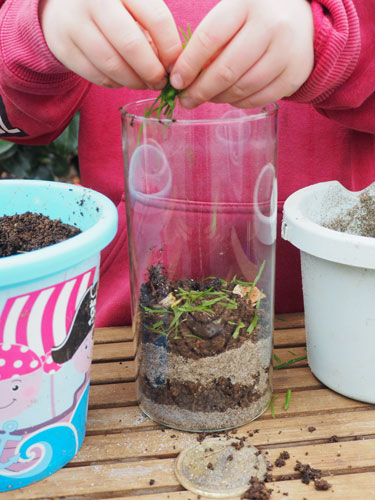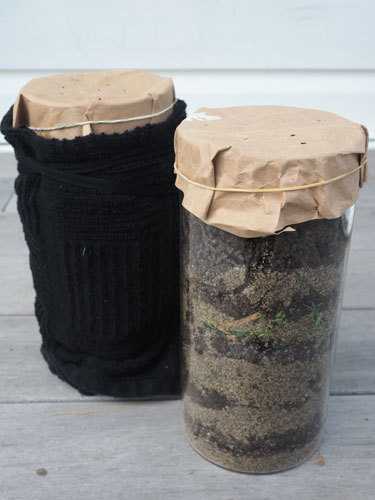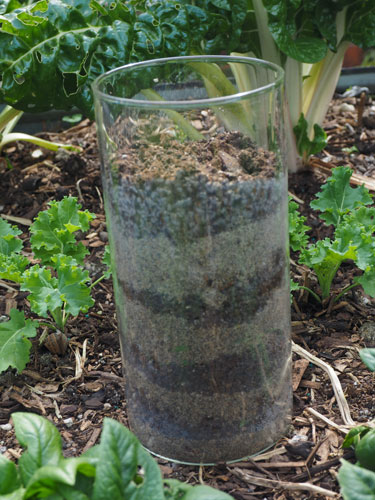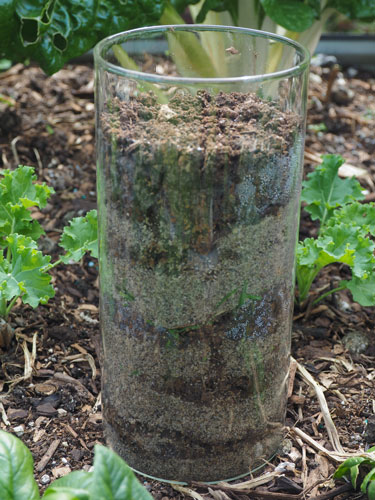Kids Go Gardening - earth works!
Earthworms are some of the garden’s best workers. They make burrows in the soil, helping air, water and nutrients get to our plants’ roots. Worms are fantastic recyclers too. As long as it’s organic (something that was once living) they can eat it!
Having a worm farm in your garden is a wonderful way to learn about these amazing creatures. Or you could make your own observation jar so you can watch worms in action!
How to make a worm jar
You will need
- A tall jar
- garden soil
- sand
- a few food scraps or grass clippings
- black paper or fabric to block the light
- a handful of earthworms.
- Find some worms in the garden and keep them in a moist dark place while you prepare their jar. Make sure they don’t dry out.
- Place a layer of of sand, about 2cm deep, in the bottom of your jar.
- Next add a layer of soil, about 3cm deep. Make sure the soil is slightly damp.
- Sprinkle in a few chopped up food scraps or grass clippings and then add another layer of sand.
- Build up your layers until the jar is nearly full, finishing with a layer of food scraps. Use a spoon or spatula to level each layer without pressing it down. You want layers like stripes that you can clearly see from the outside of the jar but keep the soil loose so your worms can easily move through it.
- Place your worms on top and cover them with a layer of soil.
- Cover the top of the jar with some paper with holes poked in it. Worms need air to breathe!
- Wrap your jar to block out the light. This will encourage your worms to work on the outside of the jar. Worms need the dark! Place your jar in a cool place away from heaters.
- After a day or two, move the dark paper away and you will hopefully see worms working on the outside of the jar. Check on your worms every few days. If the soil is dry, add a little water to keep it just damp, not soaking wet. You don’t want your worms to drown!
- Watch what happens to the layers of soil and sand when the worms have been moving through it for a week or two. Once you have finished observing your worms, set them free in the vegetable garden or compost heap.
Not all worms are the same!
Big earthworms that live in the top 20cm of garden soil eat huge amounts of soil and the organic matter in it as they make their tunnels. Other, even bigger types of earthworms burrow really deep underground. Worms that live deep in the soil are the palest in colour. Why do you think would that be?
Compost worms are smaller, darker coloured ‘surface dwellers’ that live where there is loads of organic matter to feed on; in forest litter, animal dung or the kitchen scraps in your compost heap or worm farm. These little guys are too busy eating and making baby worms to make burrows.
A worm farm is a special house for compost worms that recycle kitchen scraps into food for plants. They like it best when its chopped up small, but as long as its organic (something that was once living) they can eat it. Worms can be fussy about their food (don’t give them too many onions or citrus fruit).
HOW DO WORMS MOVE?
Worms have a coat of slimy mucus that helps them glide smoothly through the soil using two layers of muscles to stretch and flex. One muscle layer runs lengthwise and another works in a circle around the worm's body.
DID YOU KNOW?
Earthworms are almost everywhere! The only places they don’t live are in frozen ground or in the desert. Worms are sensitive to temperature and the sun’s UV radiation. Sunlight can kill them.
To find out more about these fascinating creatures go to the Science Learning Hub website sciencelearn.org.nz and search ‘earthworms’.
FUN FACTS
- Worms have no eyes, no teeth and no ears, but they ‘hear’ by sensing vibrations. They are sensitive to touch.
- Worms can live up to 15 years - teenagers! In summer they can eat about half their body weight each day.

15-Sep-2022



Day 1

Day 3

